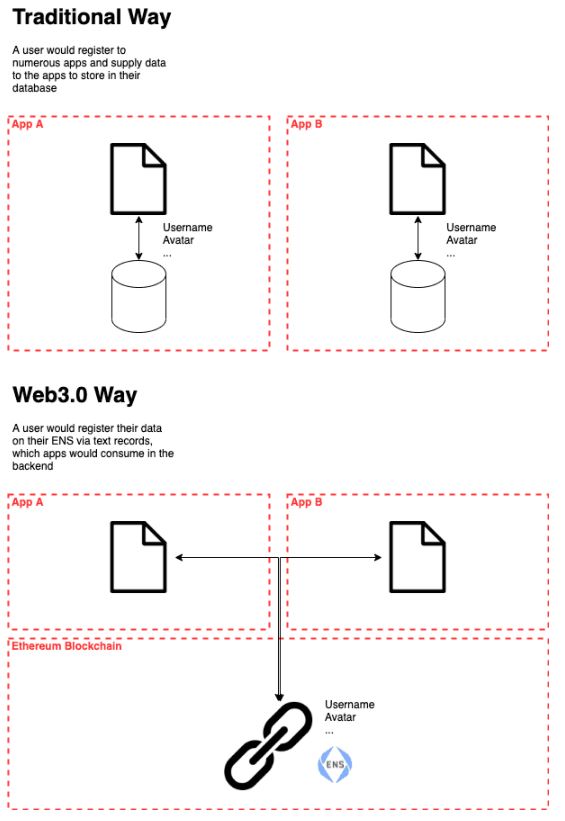With Sign-In With Ethereum, we pave the way for huge organizations to no longer be able to restrict users’ access to services or spy on their activities.
When developing Web3 applications, user authentication on Ethereum for validation purposes is a must-have functionality. As a result, blockchain developers should put implementing the functionality of Ethereum authentication for dApps a top priority.
After Web 1.0 and 2.0, Web3 is a relatively new word that refers to a new generation of web applications. It’s important to remember that web components and services are no longer hosted on servers. Instead, web applications use decentralized storage systems. Such as IPFS or consensus protocols like Ethereum to embed content.
There are several different methods for adding such components into web applications. However, because the most common method of accessing the internet is through a web browser, most Web3 content is easily accessible via browser extensions. Data stored on IPFS, for example, can be retrieved via an extension called IPFS Companion from local or remote nodes. There are also extensions for blockchains like Ethereum, such as MetaMask. The ability for users to manage their Ethereum accounts and the many ways of accessing blockchain states are both benefits of the Ethereum extension.
Users are already signing in with Ethereum. For example, most users today use nothing but their Ethereum account to:
- swap assets on decentralized exchanges
- access loans
- provide liquidity
- vote on governance decisions
- curate NFT collections on websites
Does It Save Your Time?
Sign-In With Ethereum uses generally accepted standards to generate private keys and, consequently, wallets for users. Also, it uses the Ethereum Name Service (ENS) to make account addresses human-readable and store profiles. By allowing users to give signature authentication using their Web3 wallets, it’s likely to work alongside traditional Web2 login methods.
When you try to access any service, application, or website on the internet today, what happens? It requests that you login. Creating a different account for everything you come across and want to access is now a waste of time. You must also keep track of them and securely store the login/password.
SOURCE: LINK
There is a solution. Most currently allow you to sign in using popular Web2 services such as Google or Facebook. However, these centralized services are incompatible with Web3. Sign-In With Ethereum is a decentralized, 100% uptime, and user data ownership concept. Instead of being held by a single private organization, the data is published to the Ethereum blockchain for usage by apps. You have a single identity across several applications, all of which will be authenticated using your signature wallet.
Passwords, email addresses, and other information are no longer important. Of course, you are free to add any field you want, but these three are crucial for Ethereum authentication:
- The username is a human-friendly string that allows users to use a nickname to identify themselves.
- The user’s Ethereum account address is used to authenticate with your application.
- The nonce is a secret that is generated at random in the user database schema and is used to avoid signature spoofing.
What About Security?
In terms of operational security, having an Ethereum account in a browser extension is comparable to having a password manager in a browser extension. The password manager enters your email and password into the login form. On the other side, the Ethereum wallet shares your address and the signature you carefully approved.
From a technical standpoint, it’s significantly more secure because passwords are easier to break than signatures. A website that misleads you into believing it is your bank, for example, has the potential to steal your bank account details. Once hackers compromise your email and password, malicious parties can attempt to log in to all websites where they believe you have the same credentials. Phishing Ethereum signatures is also possible. However, it is more difficult due to the signature’s very restricted validity in time and scope.
Sign-In With Ethereum and Digital Identity
While the internet’s inherent anonymity is clearly a good thing, it attaches users of ID-reliant tools to large centralized identity providers. Blockchain engineers have long discussed building “decentralized” identification standards to protect us from such risks. Sign-In With Ethereum is at least one big step toward that future.
You can use the Ethereum wallet as an identity across many services. When an identity uses a cryptographic marker, the user, not the identity provider, has complete control over the data linked with it. Eventually, you can choose whether a given service requires your identity, proof of age, or information about your ETH balance. You don’t have to provide all of that data to each service you use.
Moreover, for more great info, join us on Telegram to receive free trading signals.
Above all, for more cryptocurrency news, check out the Altcoin Buzz YouTube channel.





























